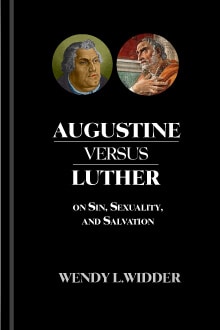Augustine and Luther agreed on many things, but the different ways they understood the first sin, its consequences, and its remedy continue to shape Protestant beliefs about sexuality and marriage.
Augustine and Luther’s diverging beliefs
For Augustine, in the late 300s and early 400s, the original sin of pride produced lust, which could be defeated through chastity. From him, the church inherited a sexuality shrouded in shame.
Luther saw original sin as unbelief, which led to pride—epitomized, in his view, by the Roman Catholic Church of the 1500s. For Luther, marriage was the remedy for self-righteous pride, and from him the church inherited an exaltation of marriage and sexuality.
Augustine fought personal issues stemming from his promiscuous pre-conversion lifestyle. His youthful lust drove him to find a lifetime of salvation in his relationship with Christ. He also battled two heretical groups and walked a tightrope of rhetoric. Forced to maintain the precarious balance between them, he didn’t pursue his theology far enough to reach an esteem for marriage and sexuality.
In contrast, Luther waged all-out war against the corruption he saw in the Roman Catholic Church. Believing that clerical vows of celibacy and other acts of spirituality resulted only in pride and hypocrisy, Luther found salvation from such sin in marriage. His sharp words and flaming condemnations posed few additional dangers to those he already faced. Because of this, Luther saw marriage as the remedy for self-righteous pride.
In Augustine versus Luther: On Sin, Sexuality, and Salvation, these giants of the faith are allowed to speak for themselves. The book compares their divergent viewpoints and demonstrates their attempts to understand the issues of their times as they defended what they believed to be the truth of God’s Word.
***
Pre-order Augustine versus Luther: On Sin, Sexuality, and Salvation on Pre-Pub today, and save nearly 20% off the original price.





